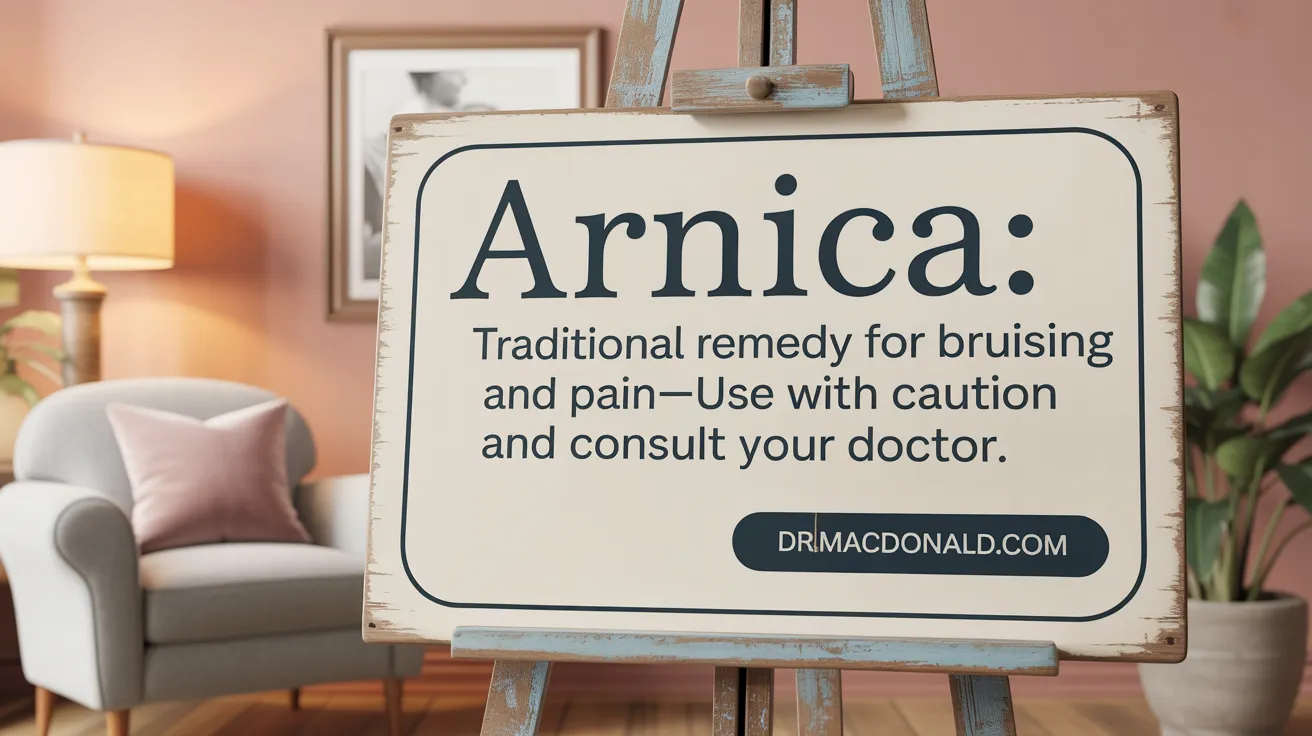Understanding Post-Procedure Scar Care Options
After undergoing cosmetic or surgical procedures, managing scars effectively is crucial for optimal healing and aesthetic outcomes. Among the various treatments available, silicone scar gel and Arnica have garnered attention for their distinct roles in post-procedure care. This article explores the benefits, application methods, mechanisms, and safety considerations of both to help patients and providers make informed decisions for personalized scar management.
Key Facts on Silicone Scar Gel and Arnica for Post-Procedure Care
- Silicone gel improves scars by hydrating tissue, regulating collagen, and modulating growth factors.
- Application of silicone gel should be on clean, dry, fully healed skin, applied twice daily and washed off daily.
- Silicone gel and sheets are equally effective, but gel is preferred for ease of use and versatility on irregular surfaces.
- Potential side effects of silicone gel include mild skin reactions; it should not be applied on open wounds.
- Optimal silicone gel treatment duration is between 3 to 6 months, starting shortly after wound healing for best results.
- Silicone gel is endorsed by medical authorities as a first-line non-invasive treatment for preventing hypertrophic and keloid scars.
- Arnica montana is a native plant traditionally used for bruises, muscle pain, and inflammation; evidence for efficacy in post-procedure care is mixed.
- Clinical trials show small or inconclusive benefits of Arnica for postoperative pain and bruising, with some evidence of effectiveness in reducing swelling.
- Arnica is available as topical gels, creams, or homeopathic pills; topical use should be on unbroken skin, avoiding open wounds.
- Safety concerns with Arnica include potential poisoning, allergic reactions, and increased bleeding risk, especially if used systemically or on open wounds.
1. Silicone Scar Gel: A Clinically Supported Scar Management Solution

How Does Silicone Gel Work on Scars?
Silicone gel improves scar appearance primarily by hydrating the scar tissue. It forms a semi-occlusive barrier that helps retain moisture in the stratum corneum—the outermost skin layer. This hydration regulates fibroblast activity and collagen production, preventing excessive collagen fibers that cause raised and thick scars like hypertrophic scars and keloids (Scar treatment basics, How silicone gel works on scars, silicone gel for scar prevention).
In addition to hydration, silicone gel modulates inflammatory mediators and growth factors such as FGF β and TGF β, balancing collagen synthesis and breakdown. It also protects scars from bacterial invasion, which can otherwise stimulate unwanted collagen production. This multifaceted action leads to softer, flatter, and less red scars while reducing associated symptoms like itching and discomfort (Silicone gel sheeting, Silicone gel for scar management).
How Should Silicone Scar Gel Be Applied?
Silicone scar gel should be applied to clean, dry, and fully healed skin only—never on open or weeping wounds (Avoiding silicone on open wounds). A thin layer of gel is gently rubbed onto the scar surface, usually twice daily, for 2 to 3 minutes until fully absorbed. Moisturizers or other creams should not be applied before the silicone gel, as they may reduce its efficacy; however, moisturizers can be applied after the gel is removed (Silicone gel sheeting instructions, Silicone gel for scar management.
The gel should be washed off daily with a mild, non-oily soap and warm water, then air dried before reapplication. It should not be worn during showers or swimming and must be stored properly between uses (Proper application of silicone on scars.
How Does Silicone Gel Compare to Silicone Sheets?
Both silicone gel and silicone gel sheets are effective for scar prevention and treatment, especially for hypertrophic and keloid scars. Clinical studies show no significant difference in their effectiveness. However, patients often prefer silicone gel due to its ease of application, suitability in humid climates, flexibility over irregular surfaces and joints, and better cosmetic acceptability since it dries quickly and is nearly invisible (Silicone gel sheets for scars, Silicone scar tape, Silicone gel scar cream advantages.
Silicone sheets require continuous wear for 12–24 hours daily, usually for several months, and must be washed and reused. Gel sheets or tape may be more cumbersome for some patients, especially in active or mobile areas (Silicone gel sheeting, Silicone scar sheets).
What Are Potential Side Effects and Precautions?
Silicone gel is generally safe but can cause mild skin reactions like redness, itching, or rash in some individuals. If such reactions occur, users should discontinue use and consult a healthcare professional. It should not be applied on broken skin or open wounds to avoid absorption and irritation (Managing reactions to silicone treatments, Silicone treatment precautions.
Users should avoid applying moisturizer under the gel, and not wear the gel during water immersion or heat exposure to maintain its effectiveness. Proper hygiene and storage also minimize risks (Silicone gel for scar management.
What Is the Recommended Duration of Treatment and Outcomes?
Effective scar treatment with silicone gel typically lasts from 3 to 6 months, sometimes longer if scarring persists. Treatment often begins shortly after wound closure or within 5 to 10 days for new scars. Regular assessments show that within 6 months, many scars become flatter, softer, and closer in appearance to normal skin. Studies report approximately 60% of scars improving to normal or near-normal with consistent silicone gel therapy (Duration for wearing silicone products, scar healing timeline).
What Are the Advantages of Silicone Gel in Post-Surgical Scar Care?
Silicone gel's easy application, fast drying time, and comfort support good patient compliance, critical for best outcomes. It can be used on all scar sizes and locations, including joints and irregular surfaces, and is suitable for sensitive skin and children.
As a non-invasive, drug-free treatment, silicone gel is a first-line recommendation by many dermatologists and plastic surgeons. Its ability to reduce scar elevation, redness, itching, and discomfort enhances patient satisfaction during post-surgical recovery (Silicone-based scar prevention products, Benefits of silicone on scar tissue.
What Do Medical Authorities Recommend?
Healthcare providers and authorities endorse silicone gel as a primary non-invasive therapy for preventing and managing hypertrophic and keloid scars. Clinical guidelines and multiple studies confirm its efficacy and safety for postoperative scar care. It is advised to initiate treatment early, maintain consistent application over months, protect scars from sun exposure with SPF 30 or higher, and combine silicone gel use with other supportive care such as gentle scar massage (Postsurgical scar management, Scar maturation process and sun protection).
Overall, silicone scar gel remains a cornerstone in evidence-based scar management protocols to improve healing outcomes and aesthetic appearance after surgery or injury (Scar treatment basics, Scar revision surgery).
2. Arnica in Post-Procedure Care: Traditional Remedy with Mixed Evidence

What is Arnica and How Has It Traditionally Been Used?
Arnica montana is a wildflower native to mountainous regions in Europe and North America, historically valued for its healing properties. It has been traditionally used for wounds, bruises, sprains, muscle pain, and inflammation. Arnica preparations, including ointments, gels, and homeopathic tablets, remain popular natural remedies for post-procedure care, especially aimed at reducing bruising and swelling (Arnica for post-surgical recovery, Arnica montana plant, Arnica uses, Arnica plant benefits).
What Does Clinical Evidence Say About Arnica's Effectiveness?
Clinical trials have produced mixed results regarding Arnica's effectiveness after surgery. Some studies suggest that topical Arnica can reduce bruising more effectively than placebo or certain topical agents such as vitamin K ointments. For osteoarthritis, Arnica gel applied twice daily over three weeks has shown reductions in pain and stiffness comparable to ibuprofen. However, overall meta-analyses report only small, often statistically non-significant benefits for postoperative pain and swelling reduction. Thus, while some patients may experience relief, the evidence is not definitive (Homeopathic Arnica for postoperative pain, Clinical trials on Arnica, Arnica uses).
In What Forms is Arnica Available and How is It Applied?
Arnica is commonly available as topical gels, creams, ointments, and homeopathic pellets or tablets. Topical forms are primarily used to soothe muscle aches, reduce bruising, and ease inflammation. These products should be applied only to unbroken skin and avoided on open wounds due to absorption risks. Homeopathic tablets contain highly diluted Arnica and are used for systemic effects, though these lack robust clinical support (Arnica for post-surgical recovery, Arnica uses, Arnica topical pain relief).
What Are the Safety Concerns and Contraindications Associated with Arnica?
Arnica is generally safe when applied topically on intact skin for short durations. However, undiluted or oral Arnica can be poisonous, potentially causing severe side effects such as vomiting, organ failure, or even death. It is unsafe on broken skin or open wounds due to systemic absorption risks. Arnica should be avoided in children under 12, pregnant or breastfeeding women, and individuals allergic to plants from the Asteraceae family (such as ragweed or marigolds). It may increase bleeding risk during surgery and interfere with blood-thinning medications, so it should be discontinued at least two weeks before surgery (Arnica side effects, Arnica uses, Arnica montana uses, Homeopathic Arnica for postoperative pain).
What Potential Side Effects or Drug Interactions Exist?
Topical Arnica can cause contact dermatitis and allergic skin reactions. Systemic absorption, especially with oral or non-diluted forms, may lead to gastrointestinal symptoms, cardiac issues, or severe toxicity. Arnica can potentiate the effects of anticoagulants, increasing the risk of excessive bleeding. Therefore, caution is advised, especially for patients on blood thinners or those planning surgery (Arnica side effects, Arnica and surgery precautions, Arnica poisoning risks.
How Does Arnica Compare to Conventional Anti-Inflammatory Drugs?
Some clinical trials indicate that Arnica may provide pain and inflammation relief comparable to NSAIDs like ibuprofen, particularly in topical gel form for osteoarthritis. However, its overall efficacy for postoperative recovery remains less well established. Homeopathic Arnica products lack consistent active ingredients, and their effectiveness is not well supported by high-quality evidence (Effectiveness of Arnica montana in surgery, Arnica and surgery precautions.
What Are the Special Recommendations Regarding Arnica Use After Surgery?
Given the bleeding risk and potential interactions, Arnica should be stopped at least two weeks before any surgical procedure. Its topical use post-surgery should be limited to healed skin only and under medical supervision to avoid adverse effects. Patients are advised to obtain products from reputable sources to ensure proper dosing and avoid toxicity. Consultation with healthcare professionals ensures safe integration of Arnica into post-procedure care, complementing other medically recommended treatments (Arnica and surgery precautions, Arnica uses for post-surgical recovery).
Making the Informed Choice in Post-Procedure Scar Management
Both silicone scar gel and Arnica offer unique benefits in post-procedure care but serve different purposes. Silicone scar gel is strongly supported by clinical evidence as an effective, non-invasive treatment to improve scar appearance by hydrating and modulating collagen production, making it a first-line option for scar management after surgery. Arnica, with its traditional use and some evidence suggesting modest benefits in reducing bruising and inflammation, may complement recovery but lacks conclusive scientific backing for scar treatment and carries safety considerations, especially regarding bleeding risks and allergic reactions. Patients should consult with their healthcare providers to tailor scar care plans aligned with their individual healing process, skin type, and medical history.
